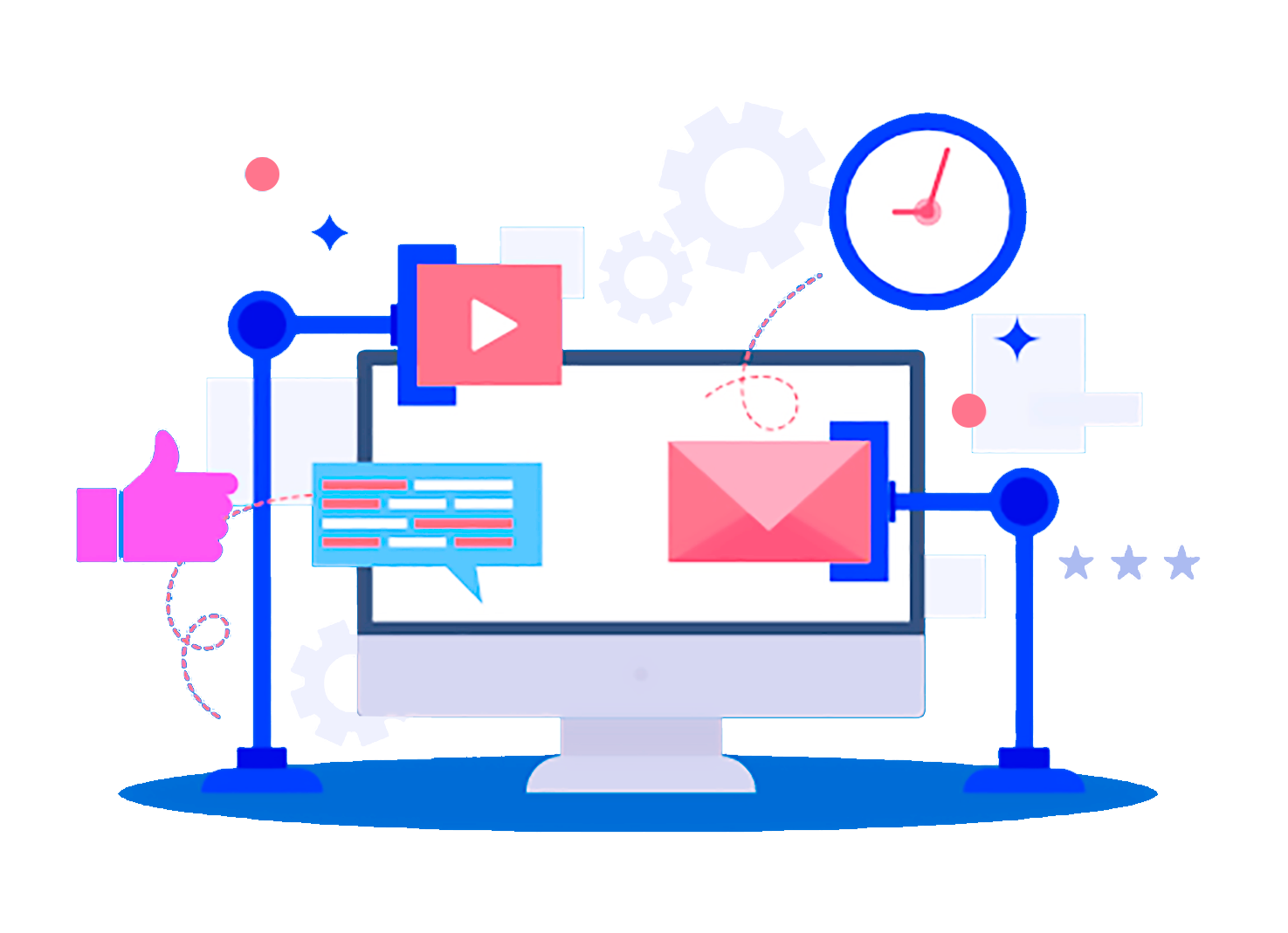What Marketing Automation Can Do for Your Business
Marketing Automation is not only a platform geared to plan, coordinate, manage and monitor all marketing campaigns in an organisation, both online and offline, but also the entire set of strategies able to maximize the profit of every company.
When applied with the buyer’s journey in mind, it can organise and nurture generated leads, aiming to convert leads into customers. Not only do marketing teams use marketing automation software, but sales departments also use it to automate sales activities to both increase revenue and maximise efficiency.
Here are a few more examples of what marketing automation can do for you:
- Define Criteria For Specific Outcomes
- When you use Marketing Automation systems, you can input specific criteria and outcomes for tasks and processes. When a set criterion is in place, the system will interpret, store, and execute the desired outcome while keeping track of leads and delivering that data to the respective sales teams. Sales teams will have access to information like which leads are more likely to convert to SQLs, or what leads they need to nurture further.
- Generate Forms and Landing Pages for Contact Information
- With Marketing Automation your organisation can build landing pages and forms without knowing HTML and attach marketing assets to automation systems to use as downloadable content. Marketing Automation can track leads and help group them based on where and how they submitted their information. For example, if a lead downloads content from your site, they are more likely to convert to a customer because that action holds more weight than simply submitting information for a discount. Also, thanks to progressive profiling, marketers can adapt the forms to fit the lead (like shortening a contact form as to not put them off) or add additional fields in future forms to learn more about the lead.
- Lead Scoring
- Marketing Automation software enables you to score leads based on their expressed interest in your brand/product/service. When marketing and sales teams align their lead grading/scoring system, your company will increase efficiency and improve sales due to a streamlined understanding of what actions equate to buying customers.
- Lead Nurturing
- Automation software can take the gathered lead scoring information and use it to send useful information/content to leads depending on where they stand in their buyer’s journey. When you keep track of where your leads are, you can personalise marketing content to meet them on their terms. By doing so, you are guiding them down your sales funnel, while delighting them with information specific to their needs.
- Visitor Tracking
- With the visitor tracking feature, Marketing Automation makes it easy to monitor website visitors. Your business can track which pages visitors went to, how long they stayed on those pages, and the overall pattern of their visit to better understand what ‘sells’ on your website, and what needs improvement.
- Sales Alerts
- Marketing Automation allows your sales reps to set up a framework of alerts to notify them when to reach out or follow-up with a lead. These alerts can add a personalised, caring touch to your next interaction, greatly improving customer experience and brand image.
- Analytics
- Your marketing team can use Marketing Automation tools that track campaign analytics to generate reports on their effectiveness. With the analytics marketing automation provides, your business can quickly identify a campaign’s impact on ROI and unearth ways of increasing it.
Remember Not to Over-Automate
When companies over-automate their marketing methodology, it shows. This means you still have to be thoughtful about the relationships you have with your customers because too much automation can seem impersonal or inorganic. Your business will know it has the right amount of Marketing Automation when it enables you to optimise a customer journey instead of simply managing one. Hence, marketing automation software can do a lot for your business by streamlining operations and providing actionable insights from which you can cater your communication method to fit each customer’s needs, at every stage.


